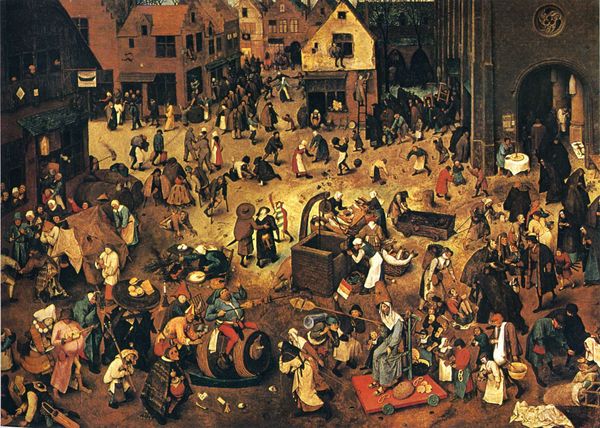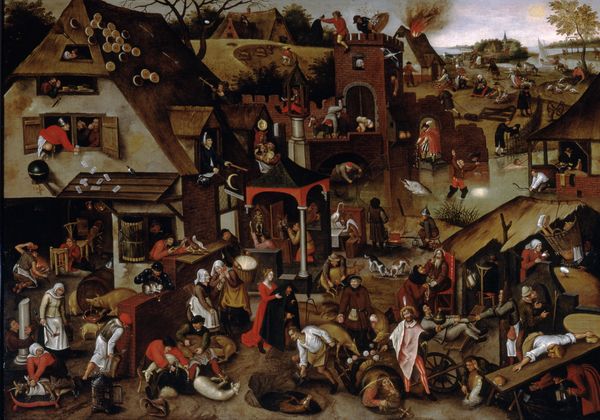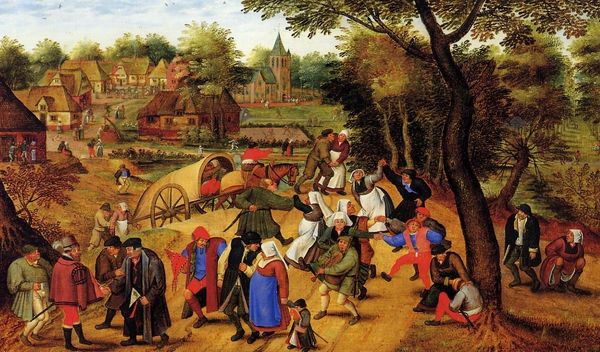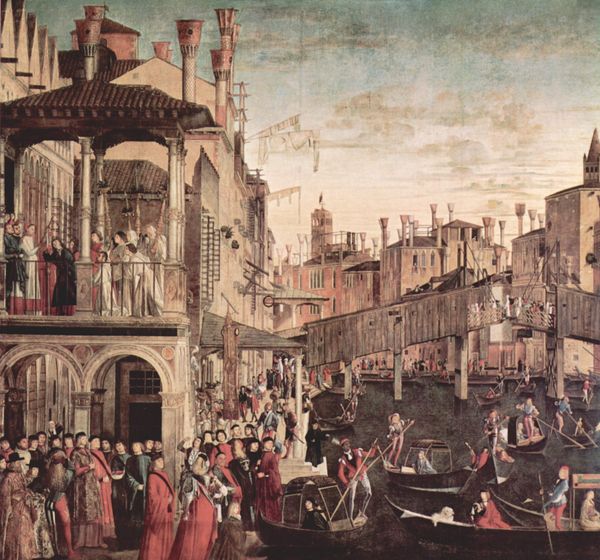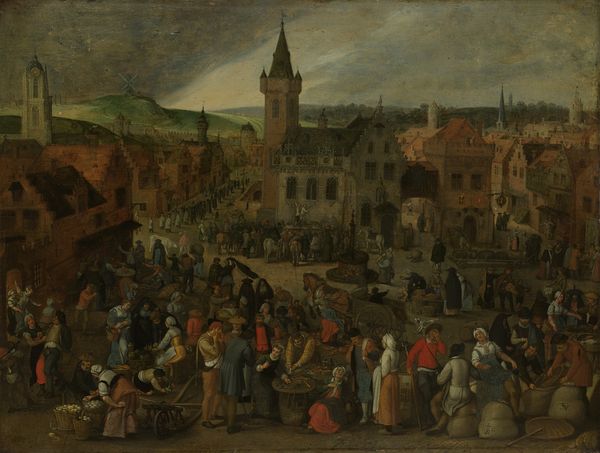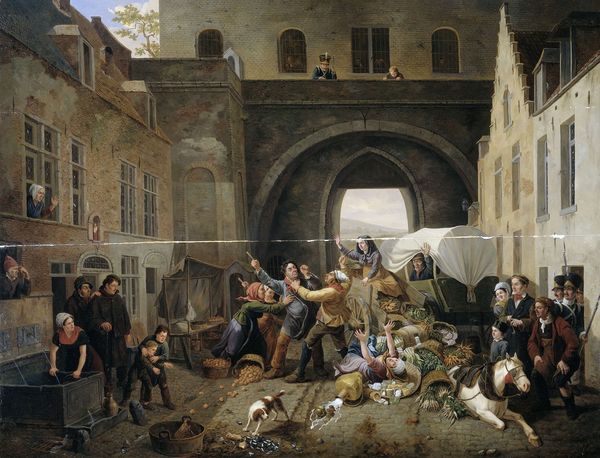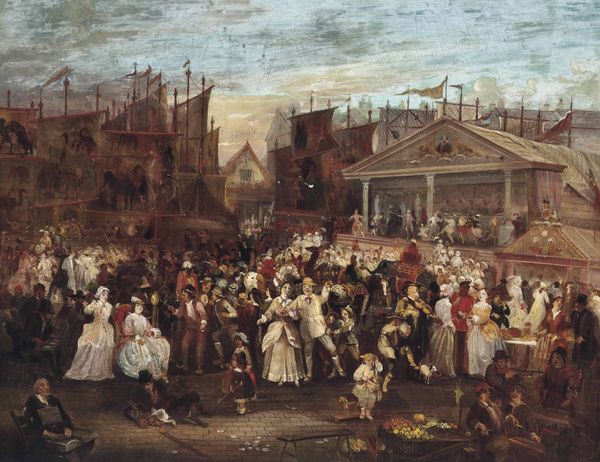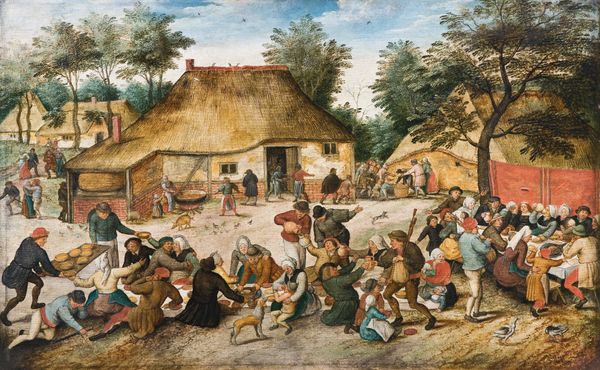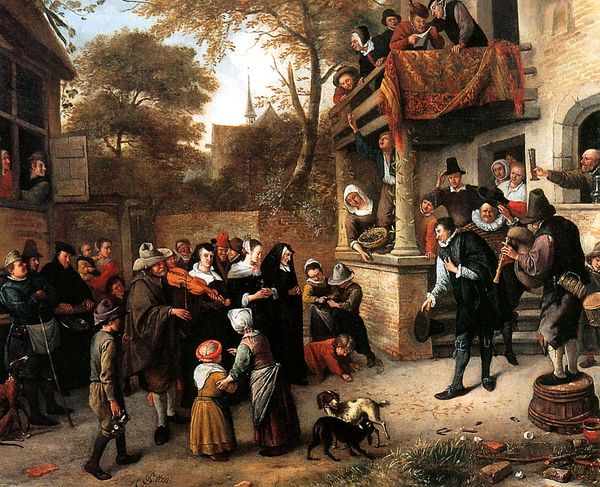
painting, oil-paint
#
narrative-art
#
painting
#
oil-paint
#
landscape
#
figuration
#
oil painting
#
genre-painting
#
northern-renaissance
#
miniature
Dimensions: 118 x 161 cm
Copyright: Public domain
Editor: Pieter Bruegel the Elder's "Children's Games," painted in 1560 with oil on wood, depicts a bustling town square overflowing with children engrossed in play. It’s captivating how many different activities are crammed into one scene, almost like a snapshot of an entire community’s youth. What strikes me is the chaotic energy – it’s both joyful and a little overwhelming. What do you see when you look at this piece? Curator: It's fascinating, isn't it? Beyond the apparent chaos, I see a meticulous, almost ethnographic record of childhood in the 16th century. But I think it's more than just a depiction of play. Consider the historical context: the Low Countries were under strict Habsburg rule at the time. Could these "games" also be understood as a commentary on social order, or rather, the lack thereof? Perhaps Bruegel uses childhood and play as a lens through which to examine broader societal issues? Do you notice any games that mirror adult behaviors or hierarchies? Editor: Now that you mention it, the mock battles and processions do seem to echo adult social structures, maybe even satirizing them. And thinking about the Habsburg rule, portraying this unbridled, almost rebellious energy in children could be pretty subversive, right? Curator: Exactly. The act of "playing" itself can be read as resistance. Remember, the Reformation was also underway, challenging existing authorities. So, where does childhood end and political critique begin in this painting? How might different social classes represented in this painting view each other through the context of 'games'? Editor: It's like Bruegel is using this seemingly innocent scene to hold a mirror up to society. I came in thinking this was just about children's games, but now I realize it's layered with commentary on power, social order, and maybe even resistance. Curator: Precisely! It pushes us to reconsider seemingly innocuous depictions. Art often speaks loudest when it whispers truths through familiar imagery.
Comments
No comments
Be the first to comment and join the conversation on the ultimate creative platform.
